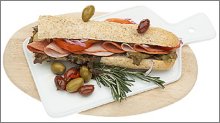最近一则新闻,从城里传到了俺乡下:
大凡关注食品健康的人,肯定听过“隔夜菜致癌”的说法。在网络、报刊上,甚至有某人吃了隔夜菜被送进急救室的报道。许多专家也纷纷解释:隔夜菜会产生亚硝酸盐,而亚硝酸盐是一种致癌物。(http://zhongyi.ifeng.com/news/ssys/20104/42234.shtml)
看来这里的罪魁祸首是亚硝酸盐。这个亚硝酸盐是什么咚咚?它是哪里来的?食品里有多少?相关标准如何?到底与癌症有啥关系?
(1) 亚硝酸盐的功与罪
常用的亚硝酸盐是亚硝酸钠,Wiki 有以下信息:
亚硝酸钠(NaNO2)常用于鱼类、肉类等食品的染色和防腐。纯净的亚硝酸钠是一种白色至浅黄色晶体。亚硝酸钠有咸味,被用来制造假的食盐。在空气中,亚硝酸钠会被缓慢氧化成硝酸钠(NaNO3)。亚硝酸钠被用于人或动物的血管扩张、支气管扩张药物中,甚至可以用于氰化物的解毒。
亚硝酸盐是致癌物。研究表明(compiled by sixwise.com):
![]()
-
Cancer: When you eat nitrites, they can be converted into nitrosamines under certian conditions, which are potent cancer-causing chemicals, in your body. Specific cancers seem to be most affected, including:
-
Colorectal Cancer: People who ate the most processed meat were 50 percent more likely to develop lower colon cancer, according to a study in the Journal of the American Medical Association.
-
Stomach Cancer: An investigation into 15 studies on processed meat found that the risk of stomach cancer increased from 15 percent to 38 percent if the processed meats ratio consumed by an individual rose by 30 grams.
-
Pancreatic Cancer: People who ate the most processed meats had a 68 percent higher risk of pancreatic cancer compared with those who ate the least, a study in the Journal of the National Cancer Institute found.
-
|
If you love lunchmeat, pepperoni, bacon, sausage and other cured meats, look for nitrite-free varieties in your grocery store. If they're not there, request them! |
(2) 看起来很吓人,那哪些食品里亚硝酸盐含量高?
(A) 蔬菜与果汁:
Nitrate (硝酸盐) and nitrite (亚硝酸盐)contents of edible components of vegetables (Am J Clin Nutr July 2009 vol. 90 no. 1 1-10 )
| Vegetable types and varieties | Nitrite | Nitrate |
| mg/100 g fresh weight | mg/100 g fresh weight | |
| Root vegetables | ||
| Carrot | 0.002–0.023 | 92–195 |
| Mustard leaf | 0.012–0.064 | 70–95 |
| Green vegetables | ||
| Lettuce | 0.008–0.215 | 12.3–267.8 |
| Spinach | 0–0.073 | 23.9–387.2 |
| Cabbage | ||
| Chinese cabbage | 0–0.065 | 42.9–161.0 |
| Bok choy | 0.009–0.242 | 102.3–309.8 |
| Cabbage | 0–0.041 | 25.9–125.0 |
| Cole | 0.364–0.535 | 76.6–136.5 |
| Melon | ||
| Wax gourd | 0.001–0.006 | 35.8–68.0 |
| Cucumber | 0–0.011 | 1.2–14.3 |
| Nightshade | ||
| Eggplant | 0.007–0.049 | 25.0–42.4 |
Mean nitrate and nitrite contents of a convenience sample of juices (ibid)
| Juices | Nitrate | Nitrite |
| mg/L; ppm | mg/L; ppm | |
| Acai | 0.56 | 0.013 |
| Carrot | 27.55 | 0.036 |
| Cranberry | 9.12 | 0.145 |
| Green tea | 0.23 | 0.007 |
| Pomegranate | 12.93 | 0.069 |
| Vegetable juice1 | 26.17 | 0.092 |
(B)腌制与处理过的鱼肉
亚硝酸钠作为食品添加剂,不仅可以对鱼类、肉类食品进行染色和保鲜,还可以抑制肉毒杆菌的生长。后者可以产生肉毒杆菌毒素,造成食物中毒。在欧盟标准下,亚硝酸钠只能以不高于0.6%的含量与食用盐混合使用,它的E编码是E250。对亚硝酸钾的标准与之类似。(wiki)
美国肉类制品(ham, hot dog, sausage, etc.) 含亚硝酸盐 156 mg/kg. Bacon: 120 mg/kg. (4) 煮熟的菜隔夜放置亚硝酸盐含量会增加吗?
亚硝酸钠可以抑制细菌生长,相应的,在含量比较高的状况下它也对包括人的动物表现明显的毒性。亚硝酸钠对鼠的半数致死量为180 mg/kg(体重),对 人的已知最低致死量为71 mg/kg(体重),就是说一个重65 kg的人可能被最低 4.615 g该种物质致死。为了避免被误食,混有亚硝酸钠的食盐(被用于非饮食用途)往往被染成浅红色。 (wiki)
(3) 各国食品中亚硝酸盐相关标准是什么?
中国《食品中污染物限量标准》:
新鲜蔬菜
新鲜肉类
(这个标准就是最近新闻中热炒的标准。)
中国《食品安全国家标准》:
熟肉制品
酱腌蔬菜
这个标准比美加都严得多。不知道执行情况如何?
美国:
EPA reference dose for chronic oral exposure: 1.6 mg/kg-day for infants
EPA drinking water advisory (4 kg child): 1 day = 1 mg/kg and 10 day = 1mg/kg
EPA maximum contaminant level (MCL): 1 mg/L
FDA: as a color fixative in smoked cured tunafish products
FDA: as a preservative and color fixative, with or without sodium nitrate, in smoked, cured sablefish, smoked, cured salmon, and smoked, cured shad
(21CFR172.175)
加拿大 (亚硝酸盐和硝酸盐总量):
Cured meat and meat by-products:
Bacon:
(http://www.gov.mb.ca/agriculture/foodsafety/processor/cfs02s71.html)
回到开头的新闻,说几种隔夜菜中的亚硝酸盐含量是5-7 毫克/公斤。看来还是先从腊肉,午餐肉,酱菜做起吧。
这个才是砖家们忽悠的重点。有关的事实如下:
(1)蔬菜炒菜的过程中,在空气中加热是氧化环境(亚硝酸盐会部分转化为硝酸盐),细菌会被杀死,各种酶(包括硝酸盐还原酶)会失去活性。亚硝酸盐的含量不会有增加。
(2)食物储存的过程中,依然是氧化环境。可能的污染是 air borne bacteria。 但是这不仅仅是蔬菜的污染源,也是各种肉类的污染源。这时最大的危险不是亚硝酸盐,而是细菌中毒, 比如肉毒杆菌。
结论: 煮熟的蔬菜隔夜放,亚硝酸盐很难有明显增加。对健康的影响极其有限。让砖家们吃午餐肉香肠和热狗去吧(亚硝酸盐含量高达 156 mg/kg)。 俺乡下人吃过夜的蔬菜不怕得癌症(亚硝酸盐
据网友说:蔬菜隔夜存放亚硝酸盐显著增加的原因是夜里容易闹鬼。这个说法很有道理。不然从早上存放到晚上砖家怎么就没有说亚硝酸盐显著增加呢?
